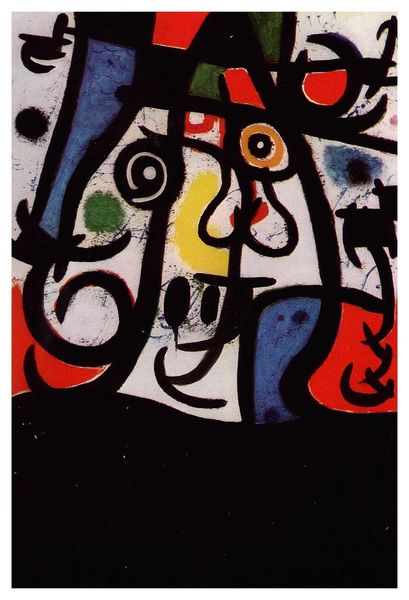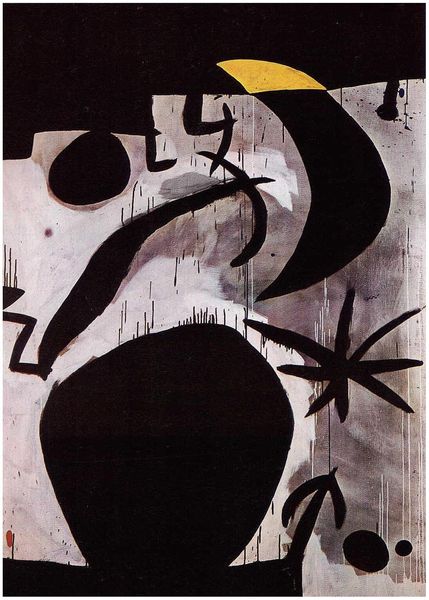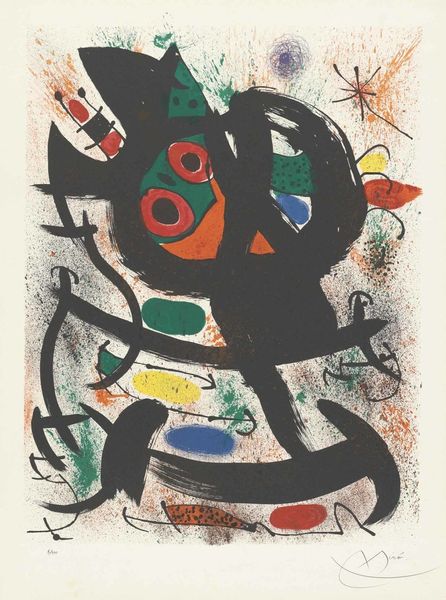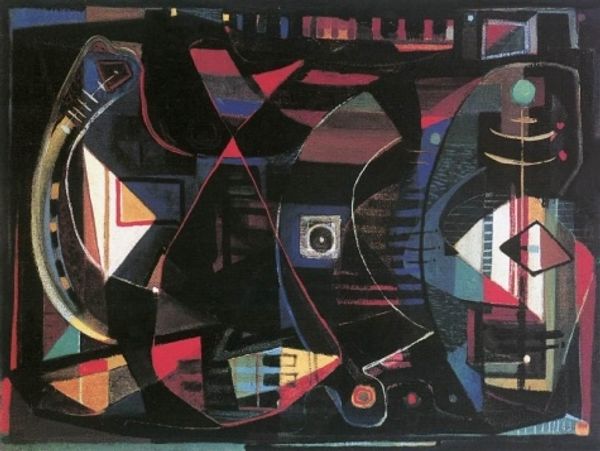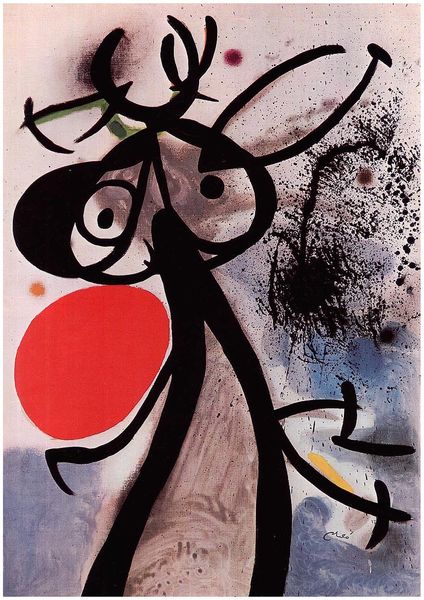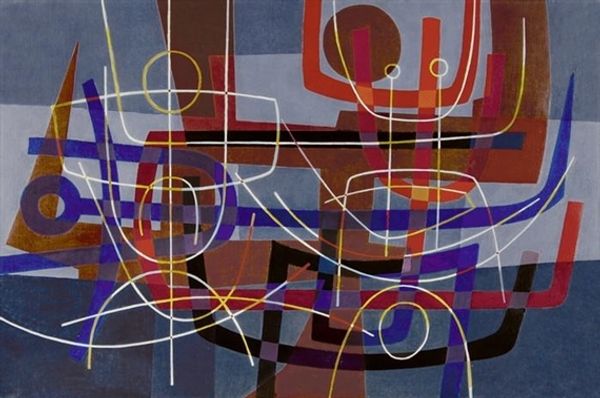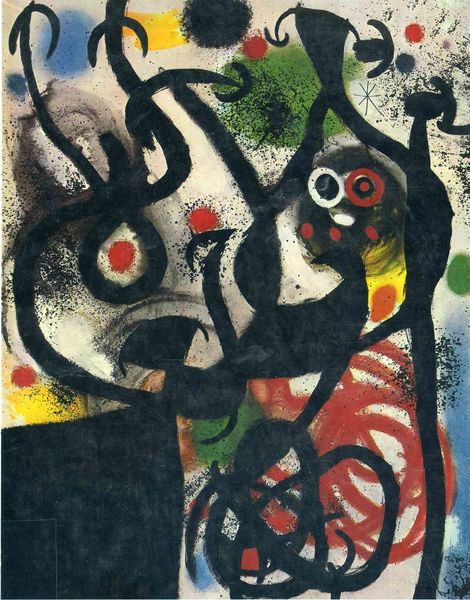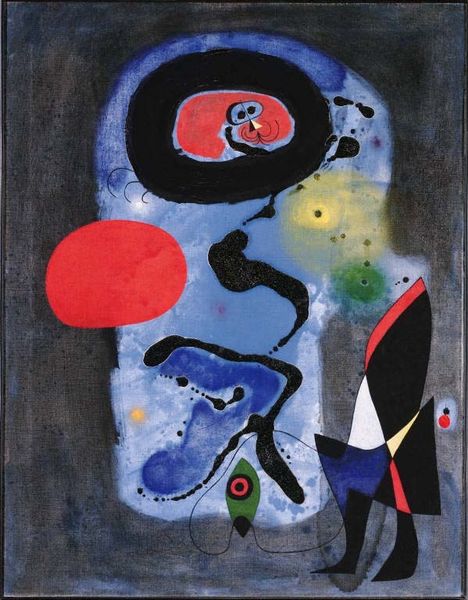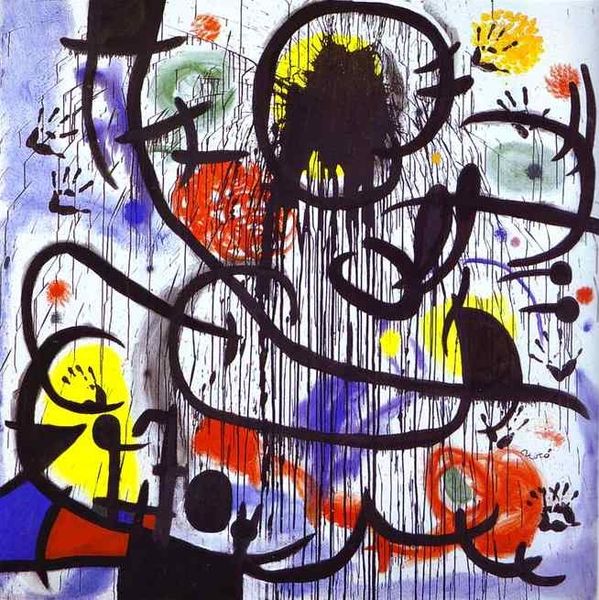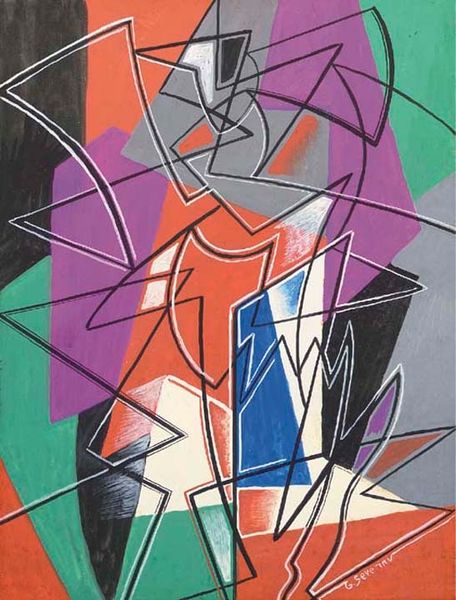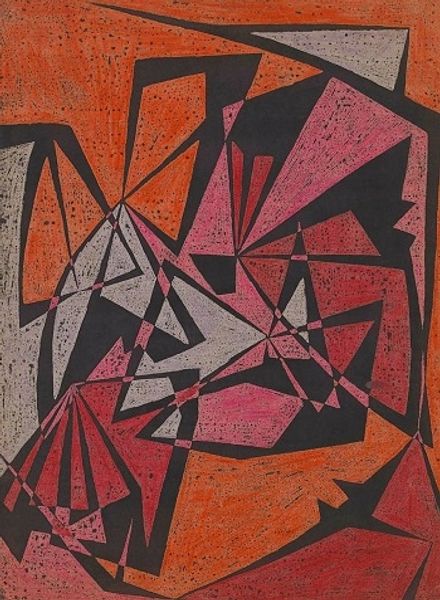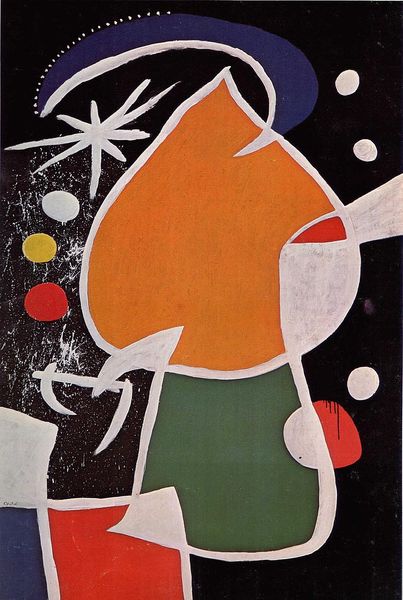
painting, acrylic-paint
#
action-painting
#
abstract-expressionism
#
non-objective-art
#
painting
#
pop art
#
acrylic-paint
#
form
#
geometric-abstraction
#
abstraction
#
modernism
Copyright: Ernst Wilhelm Nay,Fair Use
Editor: This is Ernst Wilhelm Nay's "Blaufeuer," painted in 1964. It's acrylic on canvas, and it feels very bold. The colors are quite striking. How do you interpret this work? Curator: "Blaufeuer," or "Blue Fire," exists at a fascinating intersection. Considering Nay's historical context, painting this in 1964, just before student protests erupted across Europe, we must see the geometric abstraction not just as form, but as a powerful symbol. What kind of symbolism might these shapes represent to you? Editor: Well, I see circles and lines… maybe societal structures clashing with individual expression? Curator: Exactly! Nay’s move towards abstraction in this period was a departure. He left behind earlier styles that referenced the figure. It signifies a deliberate break with tradition, mirroring a broader cultural shift. The harshness of the geometric shapes can read as resistance, reflecting societal anxieties and the call for change present in that era. How does knowing this shape your perception of the "fire" in "Blaufeuer?" Editor: That context really changes things. I initially just saw abstract shapes, but now it feels like a visual representation of societal friction. Curator: Precisely. Art like this demands we analyze beyond the surface, questioning the narrative of its time, while speaking to enduring questions about identity and collective purpose. Editor: That makes me appreciate how intertwined art is with history and cultural shifts. It is exciting to explore artworks by including political, racial, and social considerations to enhance our understanding. Thank you. Curator: My pleasure.
Comments
No comments
Be the first to comment and join the conversation on the ultimate creative platform.
